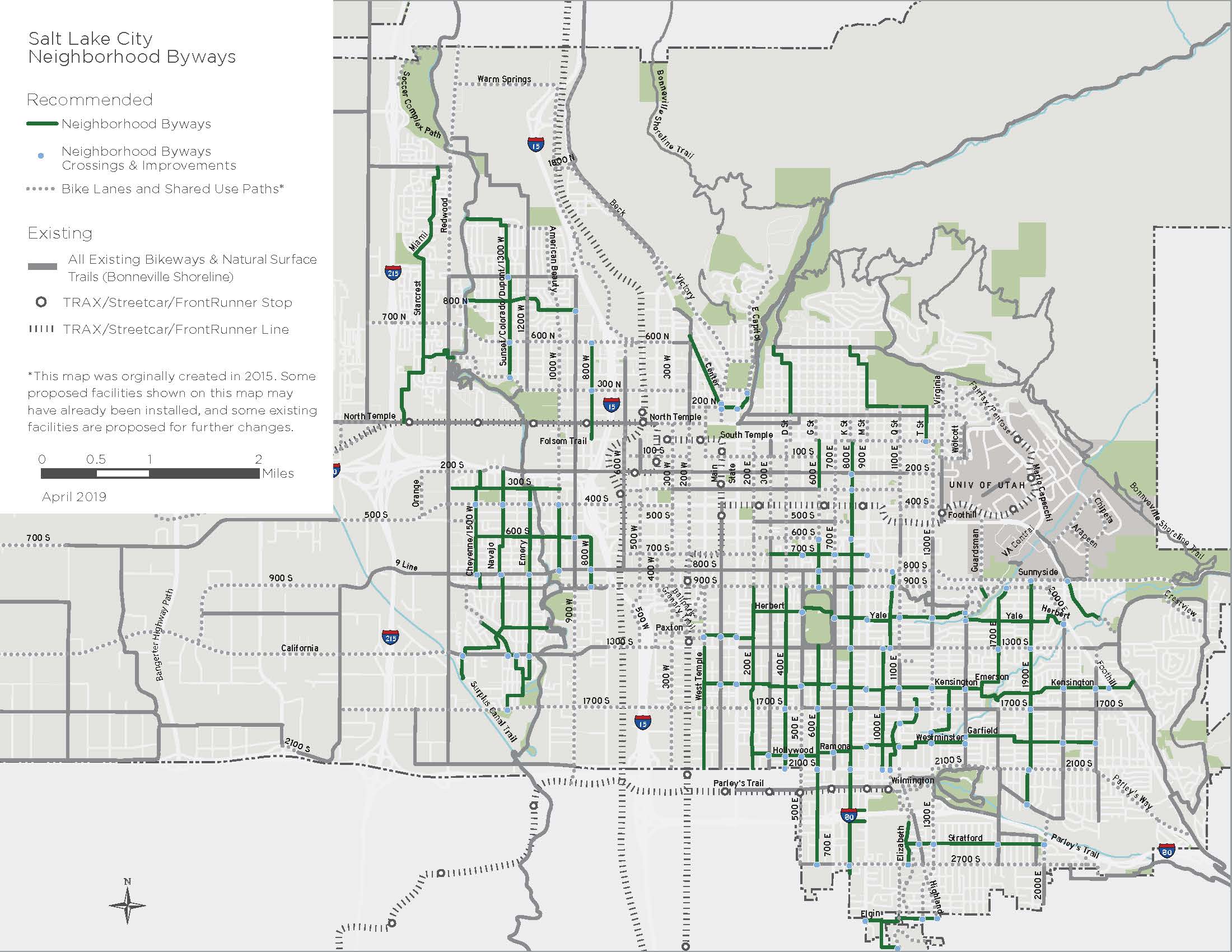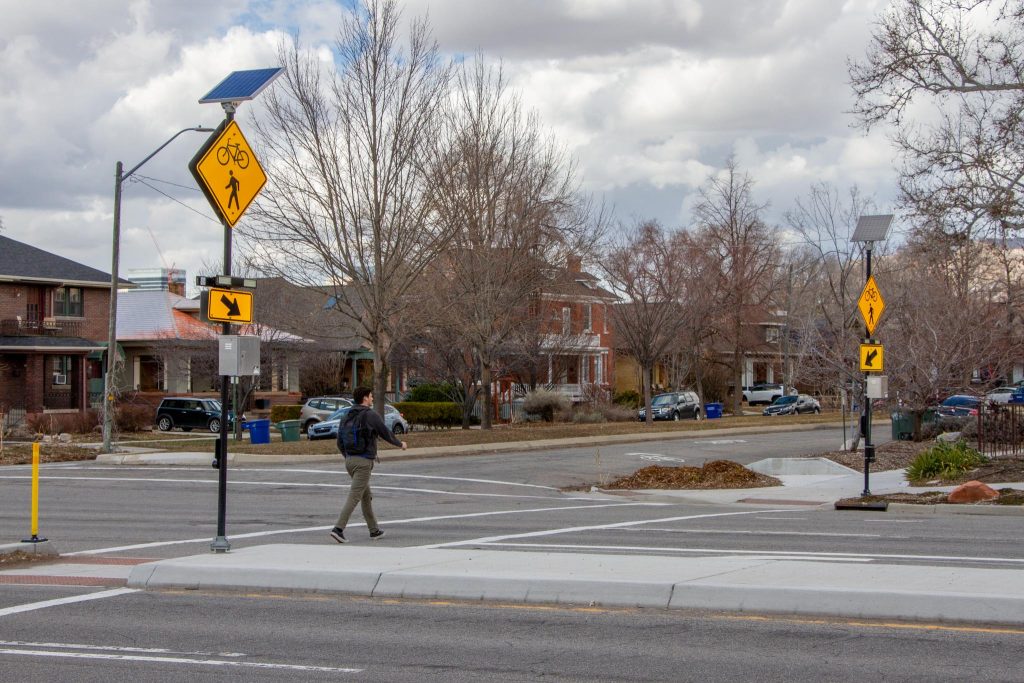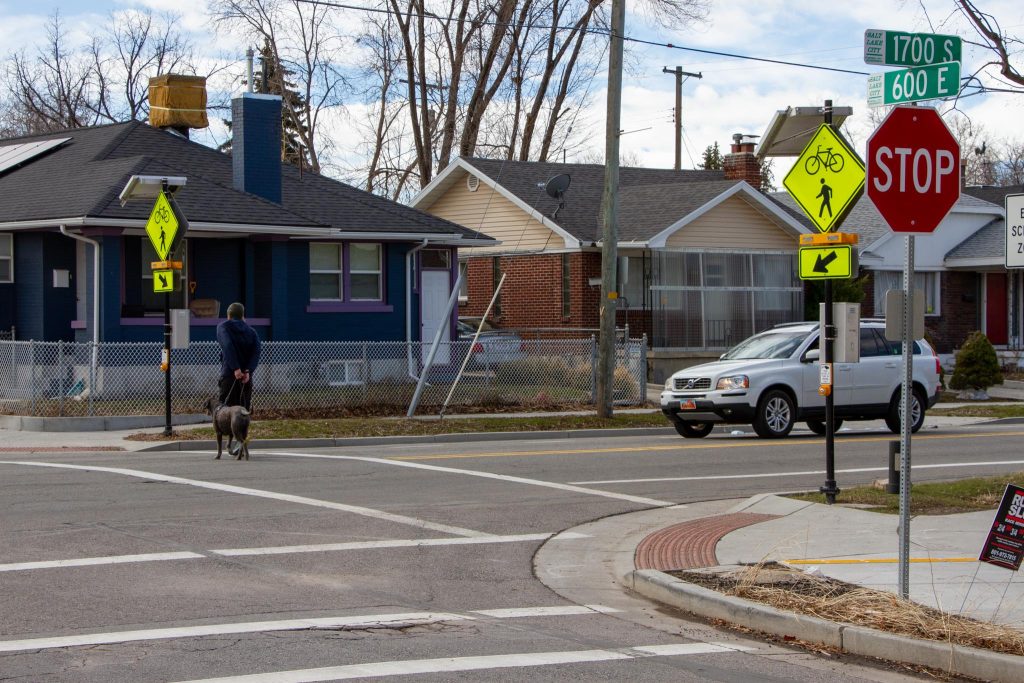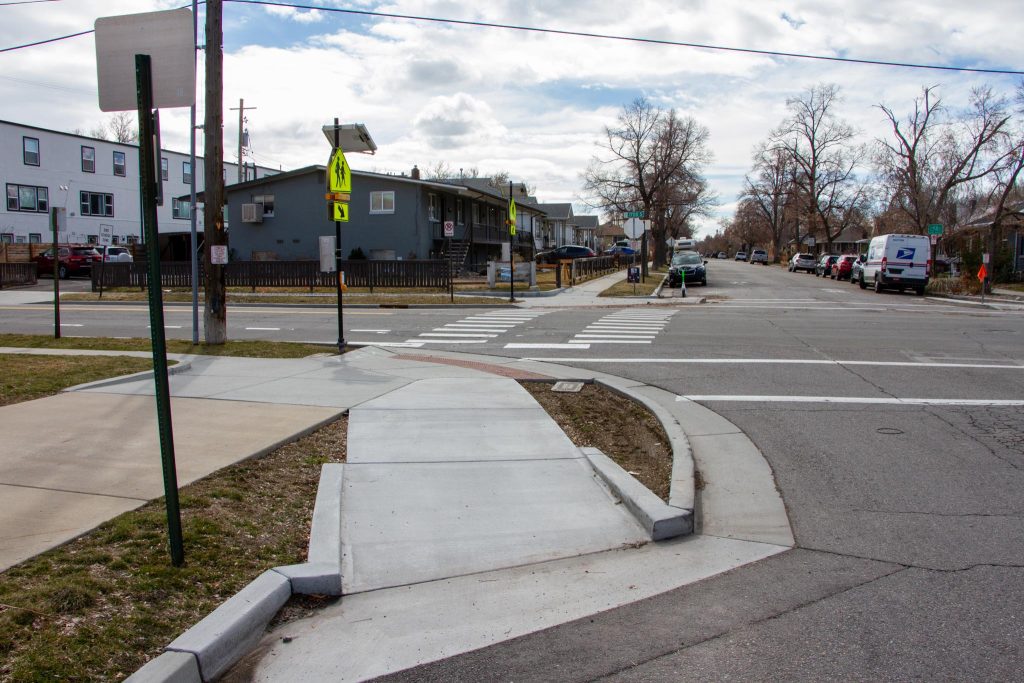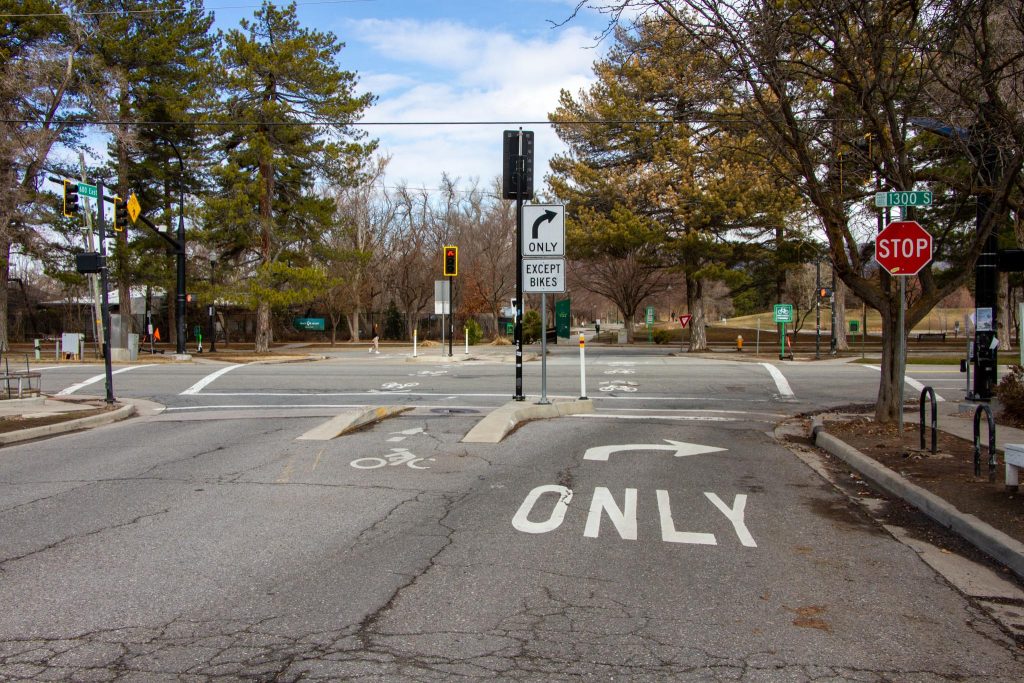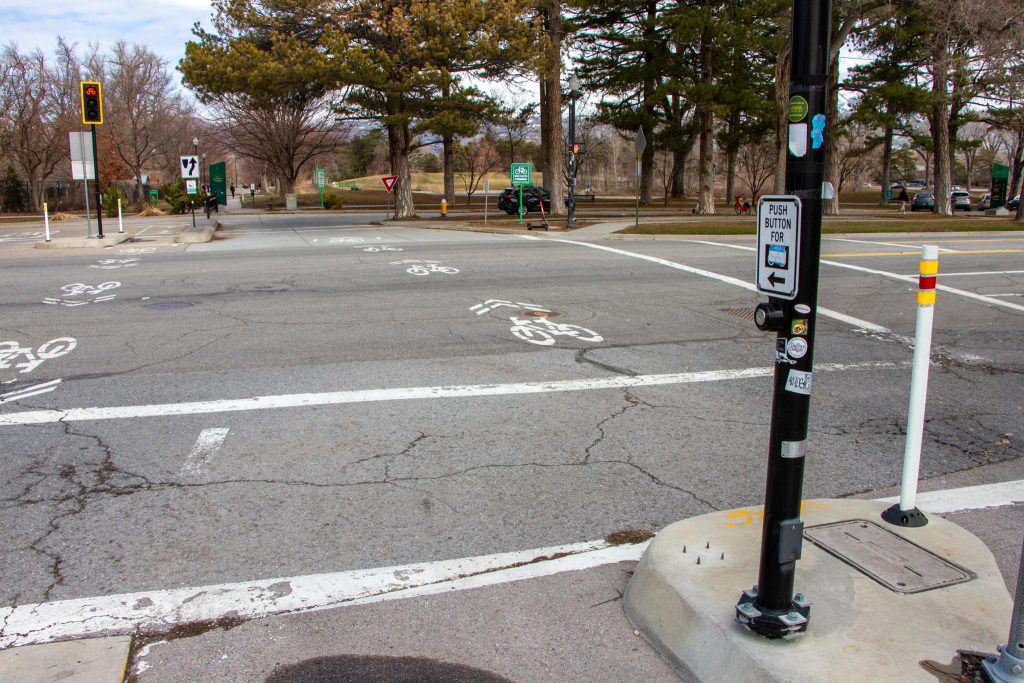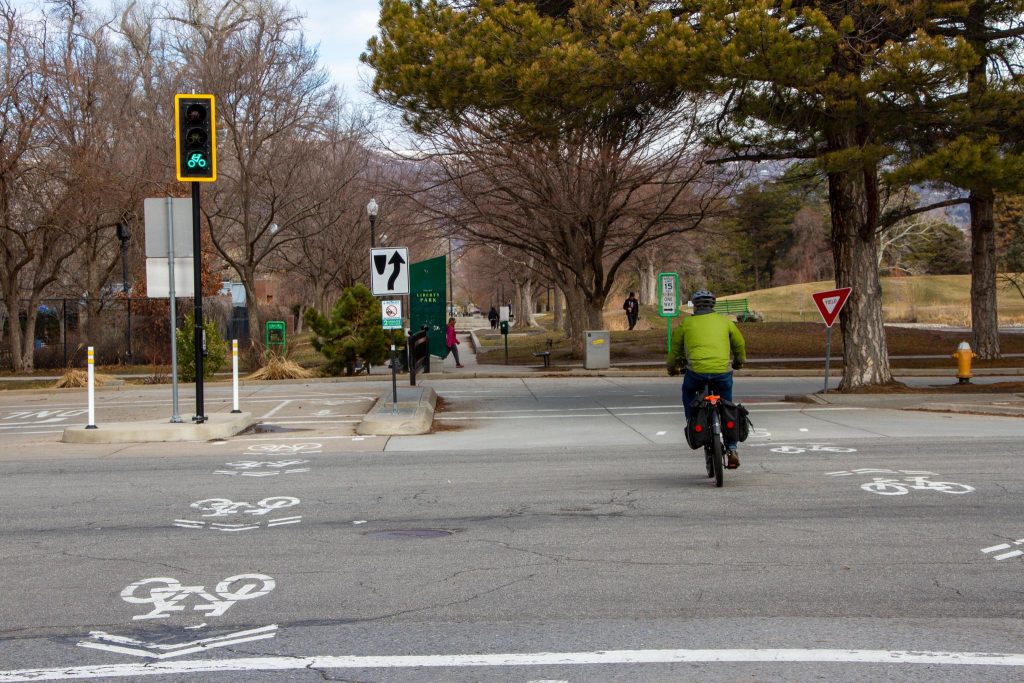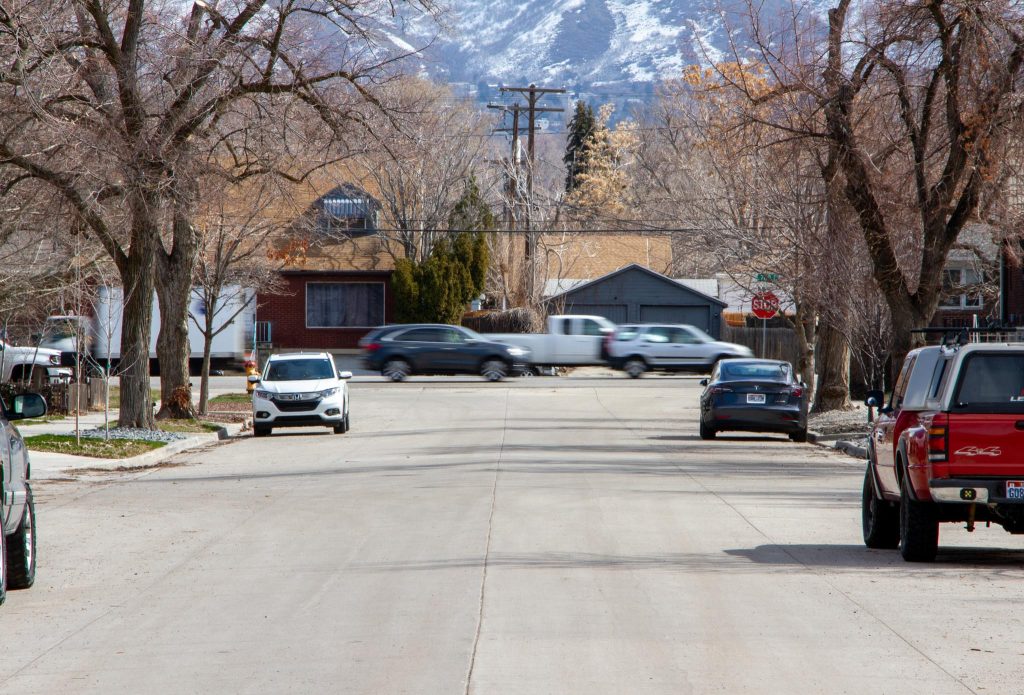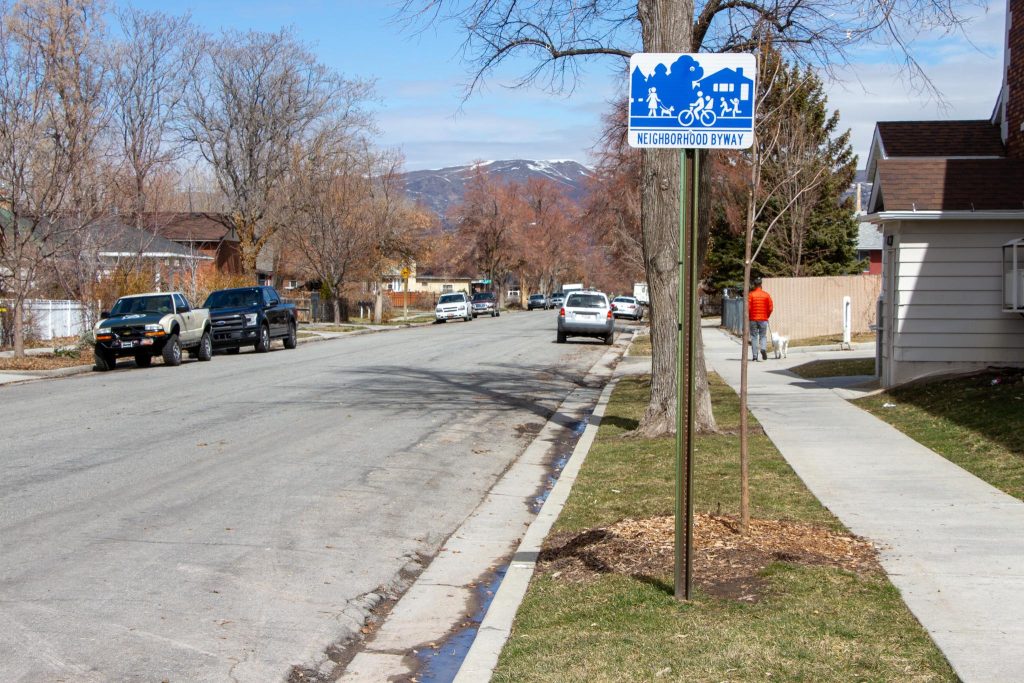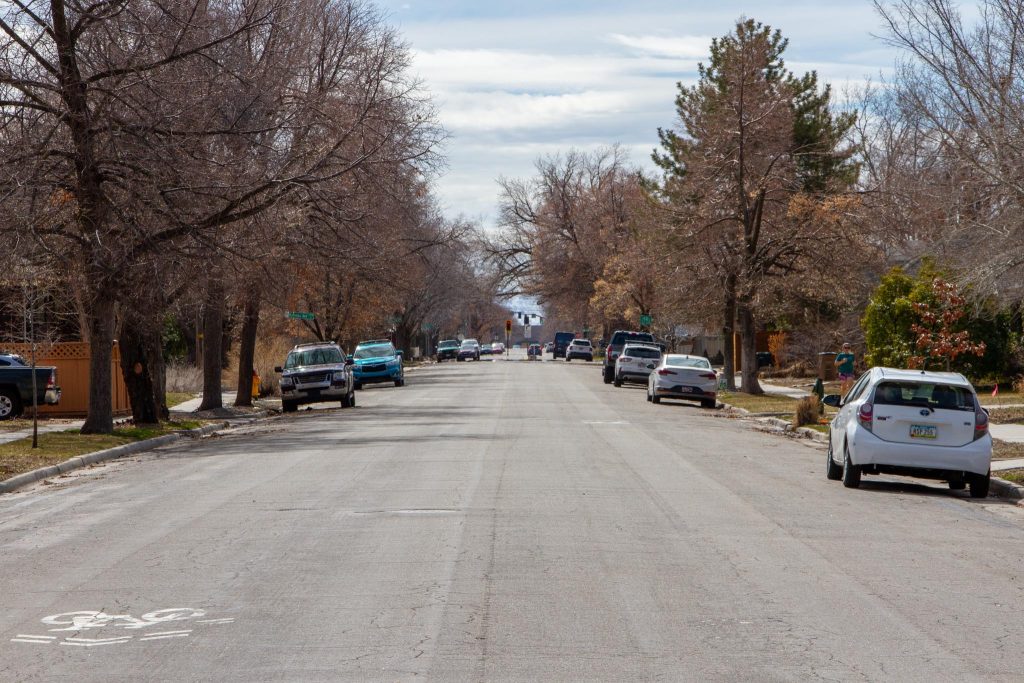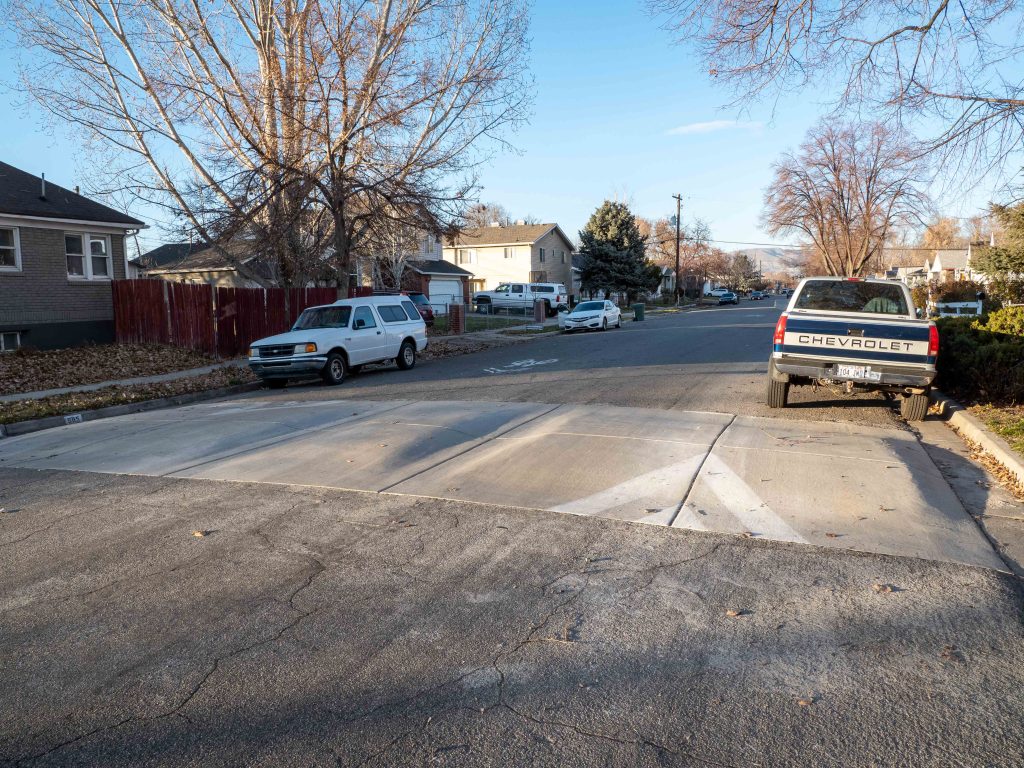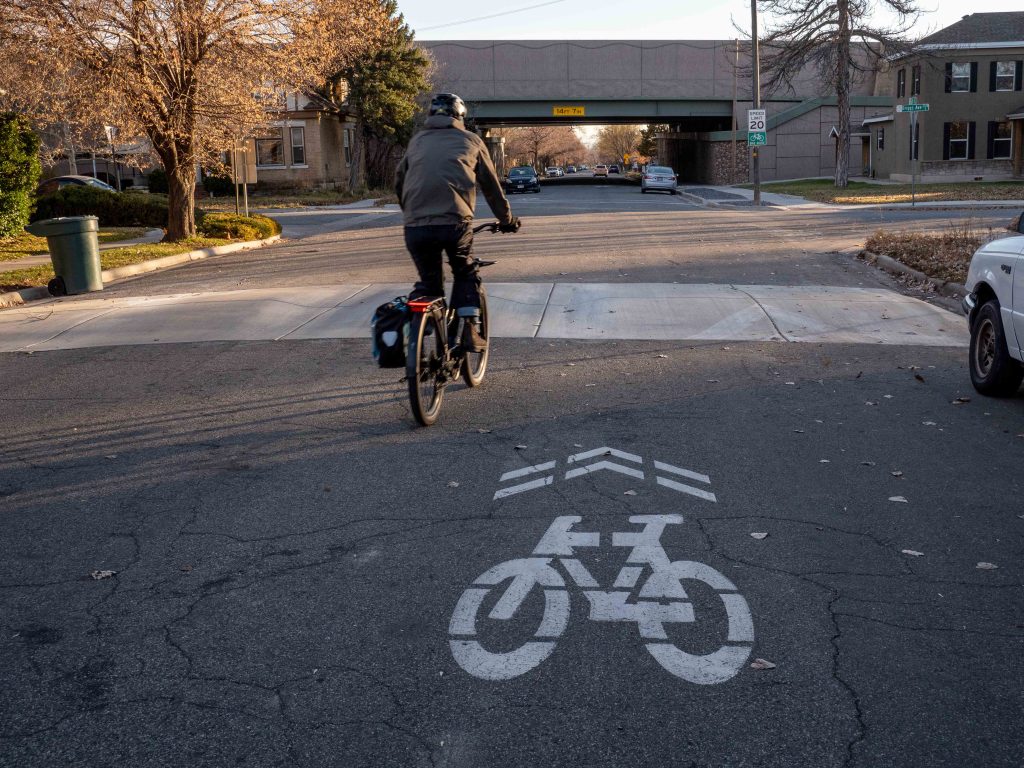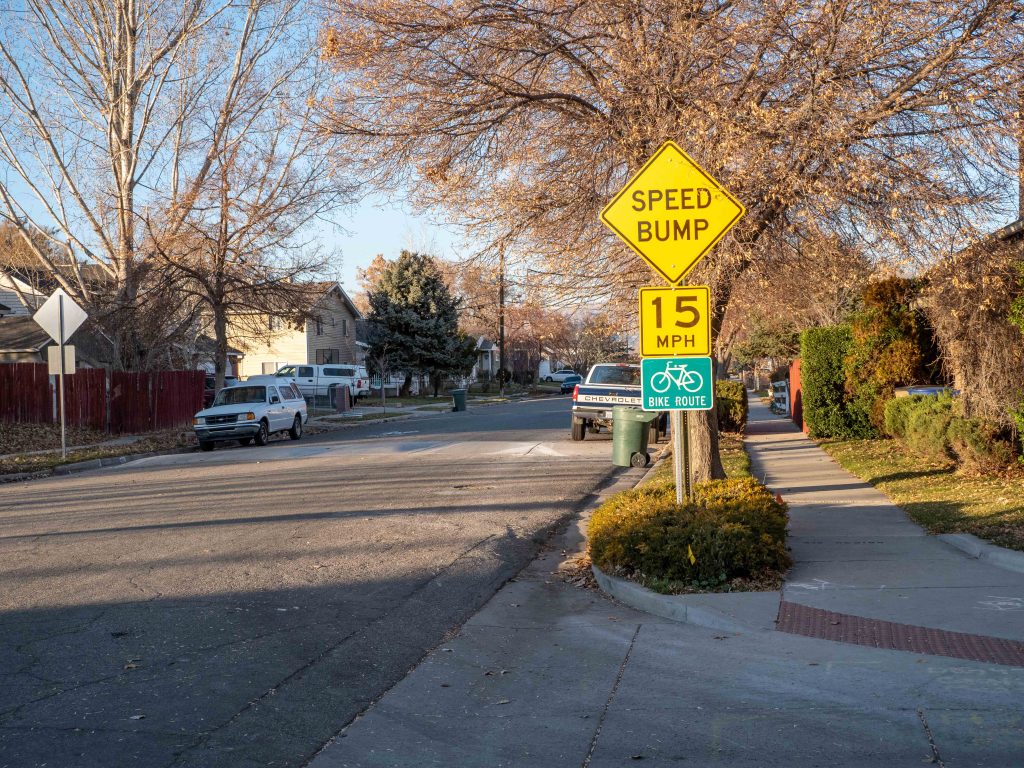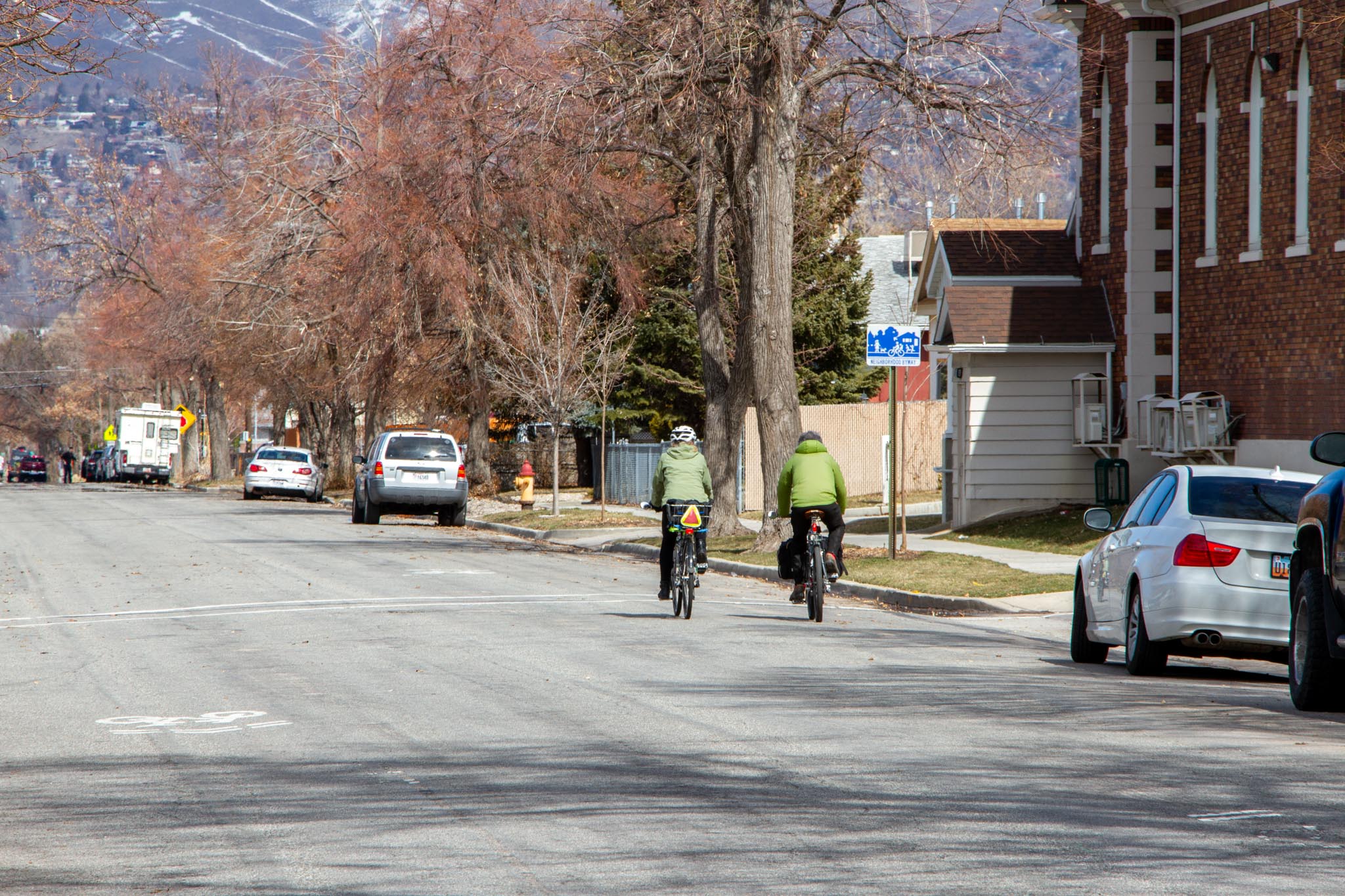
Overview
Neighborhood Byways create pleasant and convenient routes for people using active modes of transportation by encouraging safe travel speeds, discouraging cut-through vehicle traffic, providing safe crossings of busy streets, and connecting people to destinations. Salt Lake City is developing a network of these routes, which can be viewed on the Neighborhood Byways page.
Constructed in 2015, the 600 East Neighborhood Byway, extending from South Temple to 2700 South, was the first bicycle and pedestrian facility of its kind in Utah. Treatments include curb extensions, bicycle “shared lane” symbols, bicycle and pedestrian signalized crossings at 900 S, 1300 S, and 2100 S, and reduced speed limits.
Family-friendly Low Stress Bicycling
Neighborhood byways are deemed low-stress bikeways and are considered to be suitable to most people on bikes. The perceived sense of safety and comfort afforded by low-stress bikeways is appealing to many people and may help to attract new riders, especially those who may not be comfortable riding in traffic or on regular painted bike lanes.
600 East Destinations & Connectivity
The 600 East Neighborhood Byway provides direct access to destinations including Liberty Park and Trolley Square and provides connectivity between the Liberty Wells and Central City neighborhoods. The boulevard conveniently connects to TRAX and the Sugar House Streetcar, broadening mobility and helping to support alternative modes of transportation.
Equally important, the 600 East Neighborhood Byway connects the Sugar House Greenway to the City’s downtown bikeways on 300 South and 200 West. The 600 East Neighborhood Byway is an integral part of the city’s bikeway network, allowing more bicyclists to travel comfortably to all parts of the city.
Learn More
Frequently Asked Questions
What is a Neighborhood Byway?
Neighborhood Byways create pleasant and convenient routes for walking, bicycling, rolling, and other active modes of transportation by encouraging safe travel speeds, discouraging cut-through vehicle traffic, providing safe crossings of busy streets, and connecting people to destinations.
How is a street chosen to be a Neighborhood Byway?
Neighborhood byways are identified in the Salt Lake City Pedestrian and Bicycle Master Plan and are commonly located along streets with the following characteristics:
- Narrow residential streets with low to modest vehicle traffic speeds and volumes
- Direct connections between parks, schools, businesses, and other community destinations
- Greening along the route such as shade trees
What changes are considered along these routes?
Infrastructure changes along these routes will be analyzed and vetted through a planning and public engagement process. Possible changes may include:
- Curb extensions (also known as bulb-outs) at the corners of the intersections to shorten the distance when crossing the street and help calm vehicle traffic
- Wayfinding signage and pavement markings to guide bicyclists along the byway
- Opportunities for additional greening such as street trees or landscaped medians
- Various traffic calming elements to slow vehicle speeds and discourage cut- through vehicle traffic, such as speed humps, traffic circles, and more
I live on a planned Neighborhood Byway. How will this affect getting to and from my home?
Neighborhood Byways create streets where residents can safely and comfortably bike, walk, and roll with children or pets. To create this safe and comfortable environment, some traffic calming improvements and minor street access modifications may be needed to manage vehicle speeds and prevent cut-through traffic. However, residents will still be able to easily access to their property.
How can I stay informed on the development of these Neighborhood Byways?
Join our Neighborhood Byways newsletter! You can also learn more by exploring the individual Neighborhood Byway pages on this website.
Can I drive my car on Neighborhood Byways?
While vehicles are not prohibited, Neighborhood Byways routes are improved for active modes of transportation such as walking and biking. The focus is on creating a network that enhances the experience for pedestrians and cyclists by ensuring safety and convenience.
Citywide Byways Map
The following Byway routes were identified in Salt Lake City’s Pedestrian and Bicycle Master Plan in 2015.
Byway Design Guide
The Salt Lake City Neighborhood Byways Design Guidelines provide a detailed framework for transforming local streets into safe and enjoyable routes for walking and biking. Emphasizing low-speed, low-traffic environments, the guidelines include strategies for route selection, intersection improvements, and traffic calming measures. The goal is to enhance connectivity, safety, and neighborhood livability, making active transportation more accessible and pleasant for all residents. Download the full guidelines to explore SLC’s vision for vibrant, connected communities.
Photo Gallery
Contact Us
Stay in the loop by signing up for the Neighborhood Byways email list!
Email | byways@slc.gov
